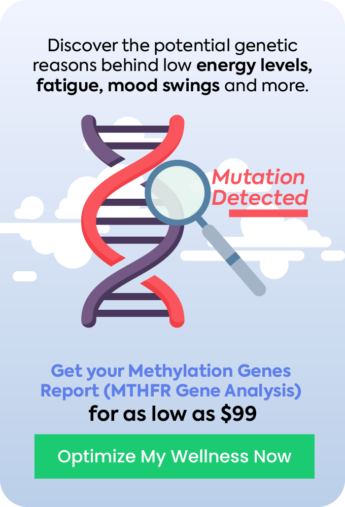What is G6PD Deficiency
Glucose-6-phosphate dehydrogenase (G6PD) deficiency is a genetic disorder that primarily affects red blood cells, which carry oxygen from the lungs to tissues in the body. By making NAPDH, this enzyme is also crucial in protecting red blood cells from oxidative damage. Mutations and common genetic variations in the G6PD gene can lead to a deficiency of the G6PD enzyme. When the G6PD enzyme levels and/or activity are low, red blood cells can break down prematurely, known as hemolysis.
Hemolysis can lead to hemolytic anemia, characterized by fatigue, jaundice, dark urine, and shortness of breath. G6PD deficiency is common in regions where malaria is prevalent, such as Africa, the Mediterranean, and Asia, where the inherited G6PD deficiency can offer protection against malaria. G6PD is also plays a key role in making ribose-5-phosphate, the building block of DNA and RNA.
How is G6PD Deficiency Inherited?
People inherit G6PD deficiency in an X-linked recessive pattern. The G6PD gene is on the X chromosome, one of the two sex chromosomes. Males have one X and one Y chromosome, while females have two X chromosomes. Males with a mutation in the G6PD gene on their single X chromosome will have G6PD deficiency. Females with one mutated G6PD gene are typically carriers and usually do not show symptoms because they have a second, normally functioning copy of the gene. However, if a female has mutations in both copies of the G6PD gene, she will exhibit symptoms of the deficiency. This mode of inheritance explains why G6PD deficiency is more common and often more severe in males than females.
Note: G6PD deficiency falls into a category of genetic conditions called Mendelian disorders. Mendelian disorders are genetic conditions that arise from mutations in a single gene. These conditions follow inheritance patterns first described by Gregor Mendel. They can be categorized as autosomal dominant, autosomal recessive, X-linked dominant, and X-linked recessive categories based on how the mutated gene is inherited and expressed. Other examples of Mendelian disorders are cystic fibrosis and Marfan syndrome. We will review these in more depth in a future article.
Common G6PD Mutations
Known G6PD mutations are genetic alterations in the G6PD gene that lead to varying degrees of enzyme deficiency. These mutations can result in the malfunctioning or reduced activity of the G6PD enzyme.. Researchers have identified 400 distinct G6PD mutations, each affecting the enzyme’s activity to different extents.
- G6PD A- (202A/376G)
- Prevalence: Common in African populations.
- Severity: Moderate deficiency (Class III).
- Clinical Manifestations: Intermittent hemolytic episodes, usually triggered by infections or certain drugs.
- G6PD Mediterranean (563C>T)
- Prevalence: Common in Mediterranean regions (e.g., Italy, Greece).
- Severity: Severe deficiency (Class II).
- Clinical Manifestations: Acute hemolytic episodes, often triggered by fava beans, certain medications, or infections.
- G6PD Canton (1376G>T)
- Prevalence: Found in East Asian populations.
- Severity: Severe deficiency (Class II).
- Clinical Manifestations: Similar to G6PD Mediterranean, with susceptibility to hemolysis due to oxidative stress.
- G6PD Kaiping (1388G>A)
- Prevalence: Predominantly in Chinese populations.
- Severity: Moderate to severe deficiency (Class II/III).
- Clinical Manifestations: Acute hemolytic anemia triggered by infections or drugs.
- G6PD Mahidol (487G>A)
- Prevalence: Common in Southeast Asian populations.
- Severity: Moderate deficiency (Class III).
- Clinical Manifestations: Mild to moderate hemolysis under oxidative stress.
- G6PD Viangchan (871G>A)
- Prevalence: Southeast Asia, including Laos, Thailand, and Vietnam.
- Severity: Severe deficiency (Class II).
- Clinical Manifestations: Acute hemolytic episodes due to oxidative stress triggers.
Genetic Connection with Other Traits/Conditions
Malaria
Interestingly, G6PD deficiency and malaria resistance have a link. RBCs with low G6PD activity offer a hostile environment to the malaria parasite growth and therefore an advantage to G6PD deficiency carriers. Individuals with this deficiency are less likely to suffer from severe forms of malaria, which has influenced the prevalence of the G6PD mutation in malaria-endemic regions.
Given this overlap, a systematic review aimed to assess the protective association between G6PD deficiency and malaria. The results show a negative association between G6PD deficiency and uncomplicated falciparum in Africa (and) among heterozygotes but not in Asia or among homo/hemizygous individuals. The study suggests that G6PD deficiency may offer protection against uncomplicated malaria in African countries, primarily in heterozygous individuals, but not against severe malaria.
Heart Conditions
The role of G6PD deficiency, one of the most common inborn enzyme disorders is debated in cardiovascular diseases (CVDs) . Researchers have considered G6PD individuals as protected against CVDs. However, recent evidence suggests that G6PD deficiency may actually increase CVD risk. Studies using cellular, animal, and human models have produced conflicting results. According to a 2021 review study, the G6PD enzyme is crucial in antioxidant defense and the balance between oxidants and antioxidants within blood vessels. Hence, its deficiency may lead to vascular dysfunction, contributing to atherosclerosis onset and progression.
A research study published this month (July 2024) has confirmed this notion. The study concluded that genes involved in glycolysis (a vital step in respiration), which includes G6PD among four other genes, play crucial roles in the progression of acute myocardial infarction and could serve as potential immunotherapeutic targets.
Psychotic Conditions
A 2023 study unraveled a link between hemolysis and some psychotic conditions. Among the reviewed literature (eight case reports and a case series of 29 patients), 40% of cases in the series presented with catatonia, and case-control studies have noted a higher prevalence of G6PD deficiency in catatonic schizophrenia.
Interesting Current Research
A case report and review study published in April this year (2024) demonstrated a protective effect of G6PD mutations against the complications of aluminum phosphide (ALP) poisoning. ALP poisoning is common in occupations that extensively use pesticides and rodenticides. This is illustrated by a case report of a 30-year-old male with G6PD deficiency who, despite severe ALP poisoning, showed rapid? clinical improvement with supportive measures and transfusion.
A study published in June this year (2024) aimed to evaluate serum miRNAs (micro RNA) as biomarkers for detecting subclinical hemolysis during the nonacute phase of G6PD deficiency. Participants were patients with severe or moderate G6PD Viangchan (871G > A) deficiency and normal G6PD individuals as controls. Results showed that serum levels of miR-451a, miR-16, and miR-155 were significantly high in patients with severe G6PD deficiency. A “3D analysis” of these miRNAs effectively distinguished G6PD-deficient individuals from healthy ones, suggesting their potential as biomarkers for nonhemolytic phases of G6PD deficiency. Thus, miRNAs could serve as additional biomarkers to detect non-apparent hemolysis in the nonacute phase of this condition.
What are G6PD Deficiency Symptoms
Symptoms of G6PD deficiency primarily arise due to hemolytic anemia, which can be acute or chronic. Acute hemolytic episodes can start due to certain medications (like antimalarials and sulfa drugs), infections, or ingestion of fava beans (favism). During such episodes, individuals may experience sudden fatigue, jaundice (yellowing of the skin and eyes), dark urine, rapid heart rate, and shortness of breath. In severe cases, hemolytic anemia can lead to hemoglobinuria (presence of hemoglobin in the urine) and back pain due to kidney involvement. Although less common, chronic hemolytic anemia can lead to ongoing fatigue, pallor, and splenomegaly (enlarged spleen). Neonatal jaundice is another symptom that can occur in newborns with G6PD deficiency, requiring prompt medical attention.
Managing G6PD Deficiency
Managing G6PD deficiency involves avoiding known triggers that can cause hemolysis. It includes certain medications (like sulfonamides, aspirin, and nonsteroidal anti-inflammatory drugs), foods (especially fava beans), and environmental factors (like mothballs containing naphthalene). Individuals must be aware of these triggers and advised to inform healthcare providers of their condition before receiving new medications. Regular monitoring of blood counts may be necessary for those with chronic hemolytic anemia. During acute hemolytic episodes, treatment may involve stopping the offending trigger, supportive care with hydration, and, in severe cases, blood transfusions. Affected individuals and their families need genetic counseling to understand the inheritance pattern and potential risks for offspring.
References
- https://medlineplus.gov/genetics/gene/g6pd/
- https://pubmed.ncbi.nlm.nih.gov/15506519/
- https://www.nature.com/articles/srep45963
- https://www.ncbi.nlm.nih.gov/pmc/articles/PMC8110402/
- https://bmccardiovascdisord.biomedcentral.com/articles/10.1186/s12872-024-03989-7
- https://www.tandfonline.com/doi/abs/10.1080/15622975.2023.2290563
- https://www.ncbi.nlm.nih.gov/pmc/articles/PMC11128147/
- https://www.nature.com/articles/s41598-024-67108-4










